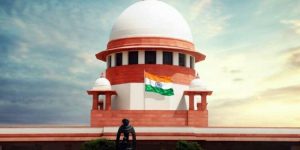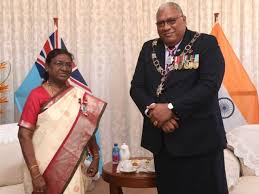Today’s Current Affairs: 8th August 2024 for UPSC IAS exams, State PSC exams, SSC CGL, State SSC, RRB, Railways, Banking Exam & IBPS, etc
Table of Contents
Bluetongue Disease:

Bluetongue disease has been confirmed in all 12 Dutch provinces, according to official data released recently.
- Bluetongue Disease is an infectious, non-contagious, vector-borne viral disease that affects wild and domestic ruminants such as sheep, goats, cattle, buffaloes, deer, most species of African antelope and camels.
- The bluetongue virus is transmitted by biting midges (Culicoides spp.).
- It is not transmitted through contact with animals or wool, or consumption of milk.
- Infections range from mild to severe, depending on the species affected.
- Most infections in cattle are asymptomatic.
- Sheep are most likely to show symptoms.
- In infected sheep, bluetongue damages the blood vessels, resulting in hemorrhage (internal bleeding), lack of oxygen in the blood, and necrosis (death) of affected tissues.
- Infections are more obvious in young lambs, and the mortality rate can be high (up to 30 per cent).
- Vaccination is used as the most effective and practical measure to minimize losses related to the disease and to potentially interrupt the cycle from infected animal to vector along with insect control measures.
Auroville:

The Union Government has referred a range of complaints in Auroville to the appropriate bodies and agencies, the Minister of State for Education has said in Parliament recently.
- Auroville was founded by Mirra Alfassa, known as the ‘Mother’, the spiritual collaborator of Sri Aurobindo on the 28th of February, 1968, as an international cultural township.
- It is the largest and oldest surviving international intentional community in the world.
- It is located on the outskirts of Puducherry, in the Villupuram District of Tamil Nadu.
- 3300 people from 58 nations, including India, live together as one community and engage themselves in cultural, educational, scientific, and other pursuits aimed at human unity.
- It has flourished from a barren desert to a 3,000-acre township and bioregion in which more than 3 million trees have been planted, home to rich biodiversity, 9 schools, multiple social enterprises, etc.
- UNESCO endorsed the project of Auroville through four resolutions in 1966, 1968, 1970, and 1983.
- The township has been under the administrative control of the Ministry of Education since 1980 and is administered as per the provisions of the Auroville Foundation Act, 1988, passed by the Parliament of India.
- According to the provisions of the Auroville Foundation Act, the Government of India provides partial funding in the form of grants to the Foundation for meeting its expenditure on the establishment, maintenance, and development of Auroville.
Power Of LG To Nominate MCD Aldermen:

The Supreme Court (SC) ruled that the Lieutenant Governor (LG) of Delhi can nominate “aldermen” to the Municipal Corporation of Delhi (MCD) without needing advice from the Delhi Government’s Council of Ministers.
- The SC ruled that Section 3 of the Delhi Municipal Corporation Act, 1957 (DMC Act) gives the Delhi LG the “explicit” power to nominate aldermen without any requirement to consult the Council of Ministers.
- The Supreme Court referred to the five-judge bench decision in Government of NCT of Delhi v. Union of India, 2023, to arrive at its decision.
- In 2023, the apex court held that Parliament would have the power to legislate over subjects in the State List as well, when it comes to the NCT of Delhi.
- In this case, it would involve enacting laws regarding ‘local government,’ which falls under the State List and pertains to the DMC Act, 1957.
Tigers Deaths In MP : SIT Report

A Special Investigation Team (SIT) report on the deaths of 43 tigers in Madhya Pradesh in Bandhavgarh Tiger Reserve and Shahdol Forest Circle between 2021 and 2023 has raised significant concerns regarding the effectiveness of wildlife protection measures in India.
- The report highlights serious lapses in investigations, insufficient evidence collection, and a lack of accountability among officials responsible for tiger conservation.
Key Findings :
- Insufficient probing into at least 10 cases of tiger deaths, with only two arrests for unnatural deaths. Authorities showed disinterest, leading to many missing body parts.
- Lacking mobile forensics and electric trip data in electrocution cases, and neglecting land ownership investigations relevant to poaching.
- Tendency to attribute deaths to infighting without proper investigation, potentially hiding poaching incidents.
- Inadequate post-mortem procedures, with poor sample collection and documentation.
- Documented medical negligence, including failure to identify foreign objects during treatment, causing a tigress’s death.
Bandhavgarh Tiger Reserve (BTR):
- It is located in the Umaria district of Madhya Pradesh, within the Vindhya hills.
Companion Of The Order Of Fiji : Highest Civilian Honour From Fiji

President Droupadi Murmu has been awarded the Companion of the Order of Fiji, the highest civilian honour from Fiji recognising the strong India-Fiji ties.
- This recognition comes during her historic visit to the island nation, marking the first time an Indian President has travelled to Fiji.
- The President of India acknowledged the contributions of the Indian diaspora, particularly the Girmitiya laborers, and emphasized the importance of overseas Indian communities.
- The word ‘girmitiya’ is derived from ‘girmit’, meaning ‘agreement’. Indian indentured labourers transported to places like Fiji and Mauritius were known as ‘girmitiyas’.
- Though girmitiyas were not technically slaves, they were subjected to “blackbirding” (deceiving or tricking people to work as slaves or poorly paid labourers).
- Fiji, a country and archipelago in the South Pacific Ocean. It surrounds the Koro Sea north of Auckland, New Zealand. It comprises over 300 islands, with only about 100 inhabited.
- It is known as the “soft coral capital of the world,” Fiji boasts over 4,000 square kilometres of vibrant coral reefs.
Earth Observation Satellite-8 : ISRO

ISRO’s Earth Observation Satellite-8 (EOS-8) is expected to be launched by the Small Satellite Launch Vehicle (SSLV)-D3 on August 15 from Sriharikota in Andhra Pradesh.
- Earth Observation Satellite-8 will be launched by the Small Satellite Launch Vehicle (SSLV)-D3.
- The primary objectives of the EOS-08 mission include designing and developing a microsatellite, creating payload instruments compatible with the microsatellite bus, and incorporating new technologies required for future operational satellites.
- It is built on the Microsat/IMS-1 bus and it carries three payloads:
- Electro Optical Infrared Payload (EOIR): It is designed to capture images in the Mid-Wave IR (MIR) and Long-Wave IR (LWIR) bands, both during the day and night, for applications such as satellite-based surveillance, disaster monitoring, environmental monitoring, fire detection, volcanic activity observation and industrial and power plant disaster monitoring.
- Global Navigation Satellite System-Reflectometry payload (GNSS-R): It demonstrates the capability of using GNSS-R-based remote sensing for applications such as ocean surface wind analysis, soil moisture assessment, cryosphere studies over the Himalayan region, flood detection and inland waterbody detection.
- SiC UV Dosimeter: It monitors UV irradiance at the viewport of the Crew Module in the Gaganyaan Mission and serves as a high-dose alarm sensor for gamma radiation. The spacecraft has a mission life of one year.
Central Electricity Regulatory Commission:

The Central Government of India appointed Shri Harish Dudani as a Member of the Central Electricity Regulatory Commission.
- Central Electricity Regulatory Commission is a statutory bodyestablished by the Government of India under the provisions of the Electricity Regulatory Commissions Act, 1998.
- It is the Central Commission for the purposes of the Electricity Act, 2003, which has repealed the ERC Act, 1998.
- The Commission consists of a Chairperson and four other members including the Chairperson, Central Electricity Authority, who is an ex-officio Member of the Commission.
- The Commission intends to promote competition, efficiency and economy in bulk power markets, improve the quality of supply, promote investments, and advise the government on the removal of institutional barriers to bridge the demand-supply gap and thus foster the interests of consumers.
- Functions is to regulate the tariff of generating companies owned or controlled by the Central Government;
QCI Surajya Recognition & Ranking Framework:

The Quality Council of India introduced the QCI Surajya Recognition & Ranking Framework to Drive Excellence in Key Sectors
- QCI Surajya Recognition & Ranking Framework is an empowering initiative designed to drive excellence among states to improve the quality of life of citizens for a Viksit Bharat.
- It aims to create a developed India by recognizing and rewarding states and organizations that excel in quality and innovation.
- This framework is categorized under four pillars: Shiksha (Education), Swasthya (Health), Samriddhi (Prosperity), and Sushasan (Governance).
- The Surajya Recognition acknowledges the outstanding performance and commitment to quality by states and organisations in these vital areas.
- The August rankings focus on Shiksha, Swasthya, and Samriddhi, with Sushasan to feature in future editions.
- In the Shiksha Rankings, Uttar Pradesh leads with the highest number of accreditations, assessments, and ratings. Delhi, as a union territory, also ranks prominently.
- In the Swasthya category, Chhattisgarh, Karnataka, Kerala, Rajasthan, Mizoram and Manipur stand out with complete certification in the Ayushman Arogya Yojana (NABH), while Tamil Nadu and Maharashtra lead in the Medical Entry Level Testing Labs (MELT) rankings (NABL).
Yen Carry Trade:

Major stock markets across the world experienced their sharpest decline in decades and the yen carry trade was one reason behind this decline.
- Yen carry trade is a trading strategy that involves borrowing at a low interest rate and investing in an asset that provides a higher rate of return.
- It is typically based on borrowing in a low-interest rate currency and converting the borrowed amount into another currency
- Generally, the proceeds would be deposited in the second currency if it offers a higher interest rate.
- The proceeds also could be deployed into assets such as stocks, commodities, bonds, or real estate that are denominated in the second currency.
- The Japanese yen is considered one of the most widely used currencies for this purpose.
- In yen carry trade, investors, including retail Japanese investors borrow at a low interest rate at home and purchase assets in another country with higher returns, such as overseas equities and bonds.
Sucralose : Recent Study

A recent study from India examining the effects of replacing sucrose or table sugar with an artificial sweetener, sucralose, found no adverse impact on glucose or HbA1c levels and indicated a slight improvement in body mass index (BMI).
- Sucralose is a no-calorie sweetener that can be used to lower one’s intake of added sugars while still providing satisfaction from enjoying the taste of something sweet.
- While some types of sweeteners in this category are considered low-calorie (e.g., aspartame) and others are no-calorie (e.g., sucralose, monk fruit sweeteners, and stevia sweeteners). Collectively, they are often referred to as sugar substitutes, high-intensity sweeteners, nonnutritive sweeteners, or low-calorie sweeteners.
- Like other no-calorie sweeteners, sucralose is intensely sweet.It is about 600 times sweeter than sugar.
- It can be used as an ingredient in any type of food or beverage.
- Sucralose is exceptionally stable, so foods and beverages sweetened with sucralose stay sweet under a wide range of conditions.
- Sucralose is made from a process that begins with regular table sugar (sucrose); however, sucralose is not sugar.
- Three select hydroxyl groups on the sucrose molecule are replaced with three chlorine atoms.
- Sucralose’s structure prevents enzymes in the digestive tract from breaking it down, which is an inherent part of its safety.
- Most (about 85 per cent) of consumed sucralose is not absorbed by the body and is excreted, unchanged, in the feces.
- Of the small amount that is absorbed (about 15 per cent), none is broken down for energy—therefore, sucralose does not provide any calories.
- All absorbed sucralose is excreted quickly in the urine.




